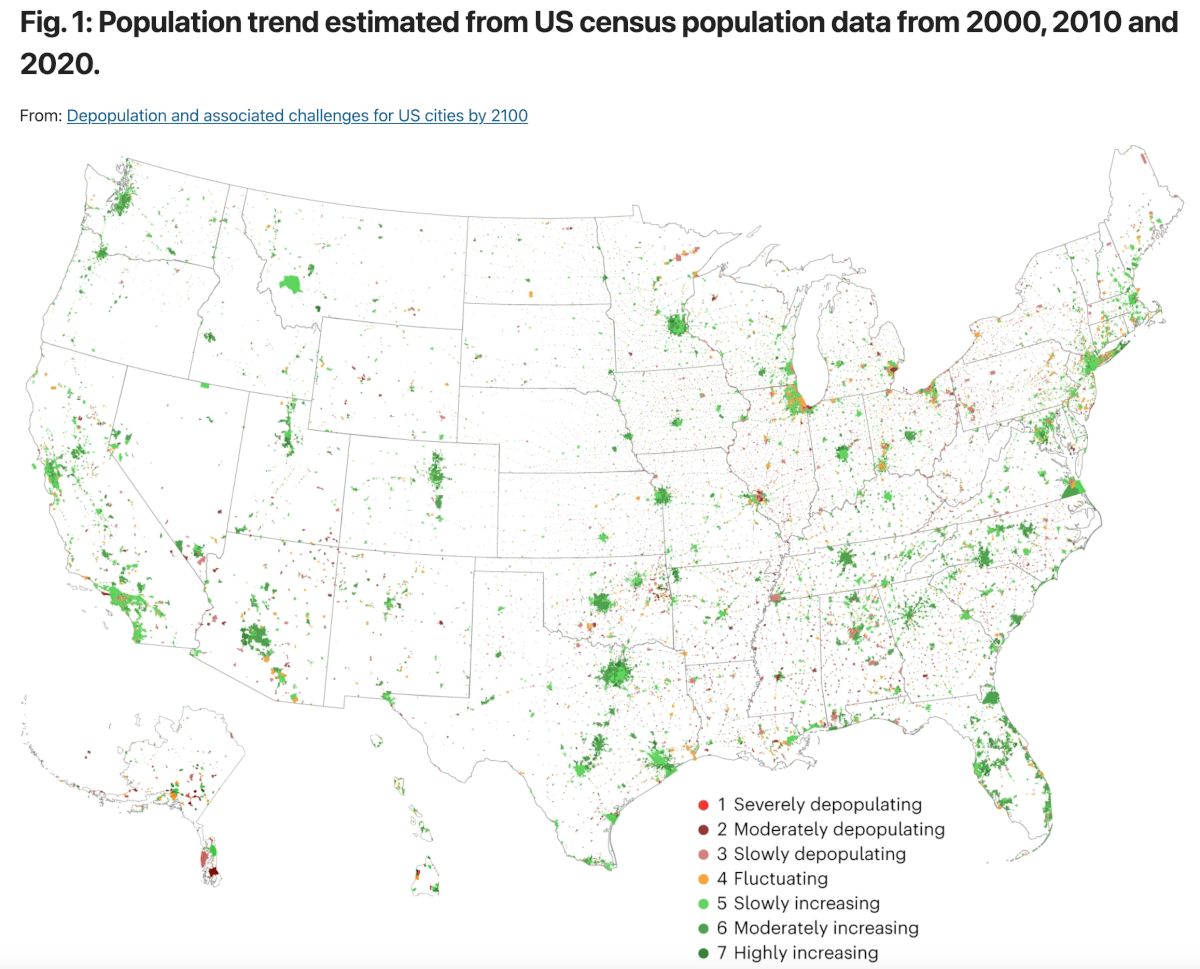CHICAGO — The United States is on the brink of a significant demographic shift, a new study says. By the year 2100, nearly half of its 30,000 cities are expected to experience a decline in population. This trend, known as “depopulation,” presents a stark contrast to the bustling urban growth of the past and poses numerous challenges to city infrastructure and services.
For years, major urban centers like Philadelphia, Detroit, and Chicago have been losing residents, with people leaving big cities for rural America, a trend that began post-World War II. This shift has been attributed to various factors, including the migration to suburbs and warmer southern cities, changes in land-use regulations, and the decline of manufacturing jobs. These migrations altered the demographic landscape, leaving behind an aging population and fewer young adults.
The study by University of Illinois Chicago researchers was conducted using U.S. Census data and sophisticated population projection models. It divides the issue into three key questions:
- Future Population Trends: How will the population of U.S. cities change up to 2100?
- Locations of Decline: Which cities are likely to experience this depopulation?
- City Characteristics: What are the common features of cities facing population loss?
Population trends from 2000 to 2020 show that 43 percent are losing population, 40 percent are gaining, and 17 percent show fluctuating trends. Cities with increasing populations tend to have lower population densities, indicating a shift to less populated or newer areas, often resulting in urban sprawl.

Future projections up to 2100, considering various climate change scenarios, paint a concerning picture: over half of U.S. cities are likely to see population declines. These declines are influenced by factors like urbanization, income level, and vehicle ownership, and vary regionally. For example, cities in the Northeast and Midwest with higher population densities are more prone to depopulation, while suburban and peri-urban areas in the South and West are likely to grow. Cities with higher vehicle ownership rates are also prime areas for growth, possibly exacerbating existing transport and environmental challenges.
“Using population projections, we found that, by 2100, close to half of the nearly 30,000 cities in the United States will face some sort of population decline, representing 12–23% of the population of these 30,000 cities and 27–44% of the populated area,” researchers write in the journal Nature Cities.
The consequences of depopulation are profound. Study authors say cities will face challenges in maintaining infrastructure and providing essential services like clean water, electricity, and public transit. There’s also a need for a paradigm shift in urban planning and policymaking, moving from growth-based strategies to more adaptable and sustainable approaches.
The team adds that addressing depopulation requires tailored solutions that consider local contexts and specific community needs. Urban planning and engineering may need to embrace adaptability, modularity, and multifunctionality to accommodate these demographic shifts.
Interestingly, international immigration could also provide a potential solution for depopulation, according to the report. The study finds a positive correlation between immigrant populations in metropolitan statistical areas (MSAs) and the growth of Hispanic/Latino and Asian communities in cities within those MSAs.
Key Takeaways
- Nearly half of U.S. cities might face population decline by 2100.
- This trend is influenced by factors like urbanization, income levels, and vehicle ownership.
- International immigration could mitigate some of the population losses.
- The trend calls for a rethinking of urban planning and infrastructure management.
You might also be interested in:
- Best Places To Live Off-Grid: Top 5 U.S. States To Live Self-Sufficiently, According To Experts
- Best Small Towns In America: Top 5 Quaint Communities Most Recommended By Experts
- Devastating 100-year floods may become annual events by 2100, study warns

Personally I believe that the environment has nothing to do with this age group having children. These children haven’t grown up and for them to have children would require that they would need to focus on someone besides themselves. This would be too painful for most in this group.